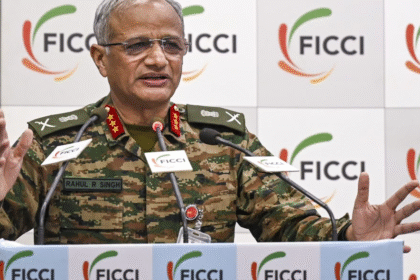Missile strike on hospital to calls for Khamenei’s elimination: 10 new developments in Iran-Israel war
Iran struck an Israeli hospital, Israel threatened to assassinate Iran’s Supreme Leader, America’s position still uncertain
The war between Israel and Iran has entered its seventh day, marked by intense military exchanges and significant loss of life.
Israel initiated the conflict with pre-emptive airstrikes targeting over a dozen Iranian sites, including key nuclear facilities, nuclear scientists, and military leaders, under a operation codenamed Rising Lion. The stated aim was to prevent Iran from developing nuclear weapons, which Israel considers an existential threat.
In retaliation, Iran has launched waves of ballistic missile and drone attacks on Israeli cities, targeting military and civilian sites. According to available reports, Israel’s attacks on Iran have resulted in a death toll exceeding 240, including 70 women and children, while Iranian strikes on Israel have killed at least 24 people.
An Iranian ballistic missile directly struck the Soroka Medical Center in Beersheba, southern Israel, causing extensive damage to a building used for surgeries. The hospital, serving over one million people, including diverse communities, reported light injuries to several individuals, with most patients evacuated beforehand due to prior warnings. Smoke was seen rising from the facility as emergency teams responded.

At least 240 people were wounded in Thursday morning’s Iranian missile strikes across Israel, with the majority of injuries classified as light. Among the injured, over 70 were from the Soroka Hospital strike in Beersheba. Four individuals sustained serious injuries, according to Israel’s Health Ministry.
The Israel Defence Forces (IDF) conducted an airstrike on Iran’s partially built heavy-water research reactor in Khondab, also known as Arak. Iranian officials reported that the facility was evacuated prior to the strike, and there was no radiation risk. Tehran had previously informed the UN nuclear watchdog of plans to operate the facility in 2026. Other military sites, including centrifuge production and weapons manufacturing facilities were also hit
IDF spokesperson Brigadier General Effie Defrin announced that Israel has destroyed two-thirds of Iran’s missile launchers, though Iran retains over 100 launchers. This follows seven days of intense strikes, with Iran launching over 450 ballistic missiles and hundreds of UAVs against Israel, targeting both military and civilian sites.

India announced plans to evacuate its nationals stranded in Israel, just a day after launching ‘Operation Sindhu’ to repatriate citizens from Iran. In a press statement, the Ministry of External Affairs (MEA) said Indian citizens in Israel who wish to return will be assisted under the same operation. Their evacuation will be carried out via land routes from Israel, followed by air travel back to India.
Israel’s Defence Minister Israel Katz declared that Iran’s Supreme Leader Ayatollah Ali Khamenei “can no longer be allowed to exist” after the Soroka Hospital strike. Speaking in Holon near Tel Aviv, Katz accused Khamenei of personally ordering attacks on civilian targets, including hospitals, and labelled him a threat to Israel’s existence. Previous reports indicate that American intervention discouraged Israel from targeting Khamenei earlier.
Iran’s Foreign Ministry spokesperson Esmaeil Baqaei criticised the International Atomic Energy Agency (IAEA) for alleged bias and complicity in Israel’s actions. This followed an IAEA report alleging Iran’s non-compliance with nuclear obligations, issued just before the conflict began. Iran accused the agency of siding with Israel in its “war of aggression.”
Iran’s Deputy Foreign Minister Kazem Gharibabadi warned that Iran has “all necessary options on the table” if the US directly intervenes to support Israel. He urged the US to remain neutral or risk facing Iranian retaliation. The Kremlin also cautioned that US military intervention in the conflict would lead to a “terrible spiral of escalation.”
The US military repositioned aircraft and naval vessels from Al Udeid Air Base in Qatar and a port in Bahrain, home to the US Navy’s 5th Fleet, to avoid potential Iranian attacks. A US official described this as a standard force protection measure, emphasising that no US forces were directly involved in offensive actions against Iran. President Donald Trump has not committed to a timeline for deciding whether to join Israel’s campaign against Iran, with reports indicating he is weighing options amid pressure from Israel to use US bunker-busting bombs on Iran’s underground nuclear sites.
The Israeli military that Iran used a missile with multiple warheads in its attack, posing a new challenge to its defences. Instead of having to track one warhead, missiles with multiple warheads can pose a more difficult challenge for air defence systems, like Israel’s Iron Dome.








